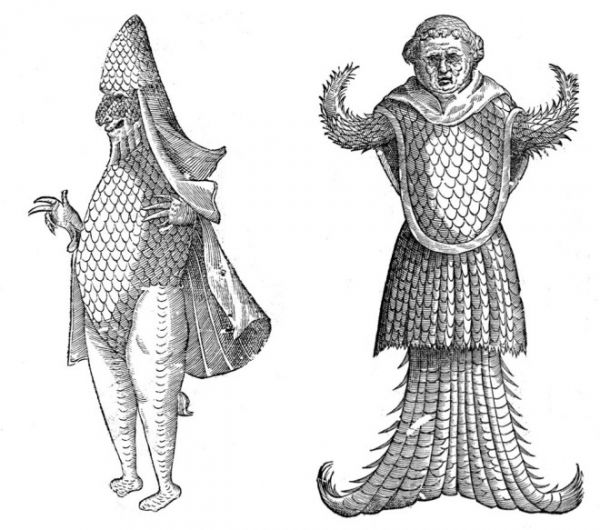Plenty of seafarers saw mermaids, because the sea is full of strange unidentified creatures that are difficult to describe. You can read about quite a few of these sightings over the centuries that added to our mermaid myths at Wired.And so mermaids entered European mythology with conflicting personalities: Sometimes they were portrayed as beautiful, seductive maidens—almost goddesses like Atargatis—greatly desired by lonely sailors, while also being cast as siren-esque beasts that dragged men into the inky-black depths. But whatever the portrayal, mermaids wound their way deep into the nautical lore of the Middle Ages onward.
Really, it was best to avoid mermaids and mermen, just to be sure. Olaus Magnus, the 16th century writer and cartographer whose seminal map Carta Marina obsessively cataloged the many monsters of the seas around Scandinavia, noted that fishermen maintain that if you reel in a mermaid or merman, “and do not presently let them go, such a cruel tempest will arise, and such a horrid lamentation of that sort of men comes with it, and of some other monsters joining with them, that you would think the sky should fall.” Sea-people, it was widely held, were terribly bad luck to see or snag.
Welcome to ...
The place where the world comes together in honesty and mirth.
Windmills Tilted, Scared Cows Butchered, Lies Skewered on the Lance of Reality ... or something to that effect.
Windmills Tilted, Scared Cows Butchered, Lies Skewered on the Lance of Reality ... or something to that effect.
Sunday, October 19, 2014
The Murderous, Sometimes Sexy History of the Mermaid
For
many people, the idea of a mermaid is shaped by the 1989 Disney movie
The Little Mermaid, or possibly the 1984 Tom Hanks film Splash. The myth
of a half human-half fish creature wasn’t always as delightful. They
were originally considered gods along with other strange chimeras. In
the Odyssey, mermaids were deadly sirens that lured men to their deaths.
Subscribe to:
Post Comments (Atom)


No comments:
Post a Comment